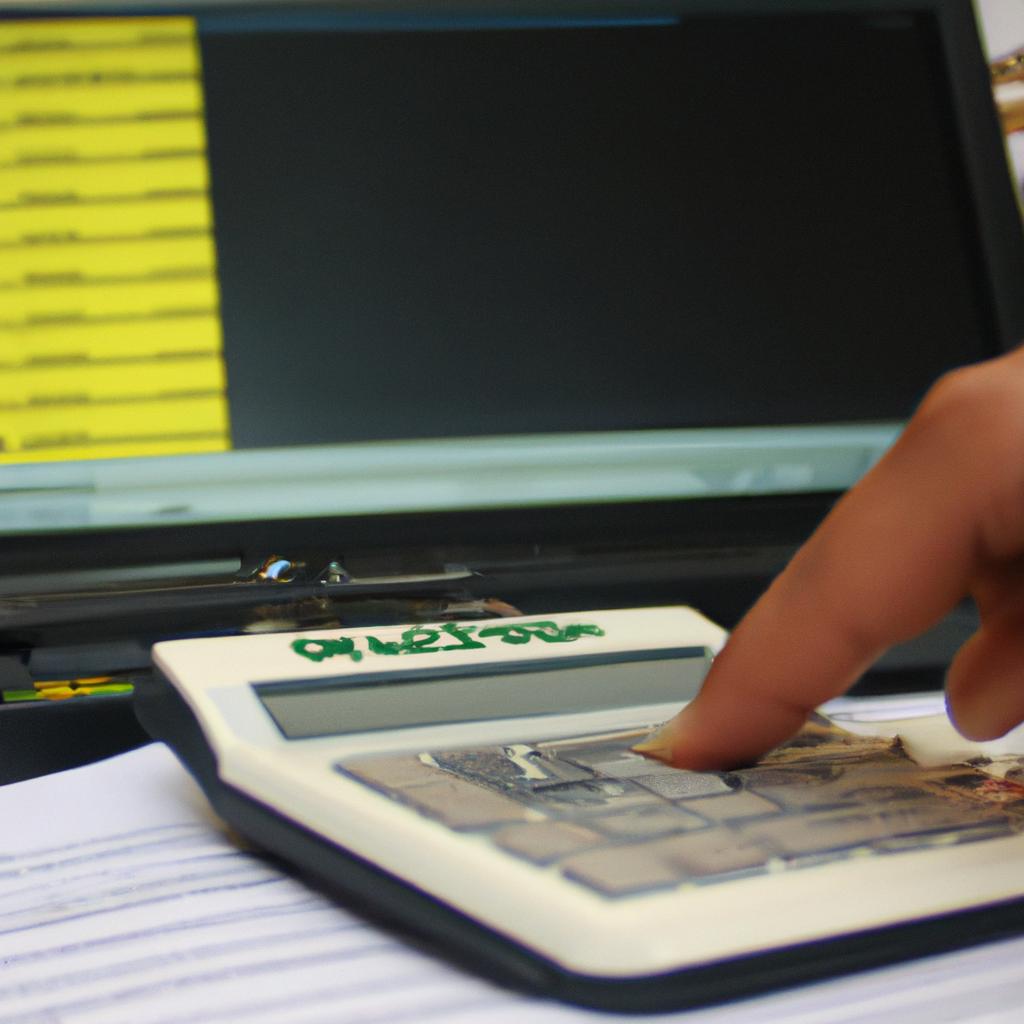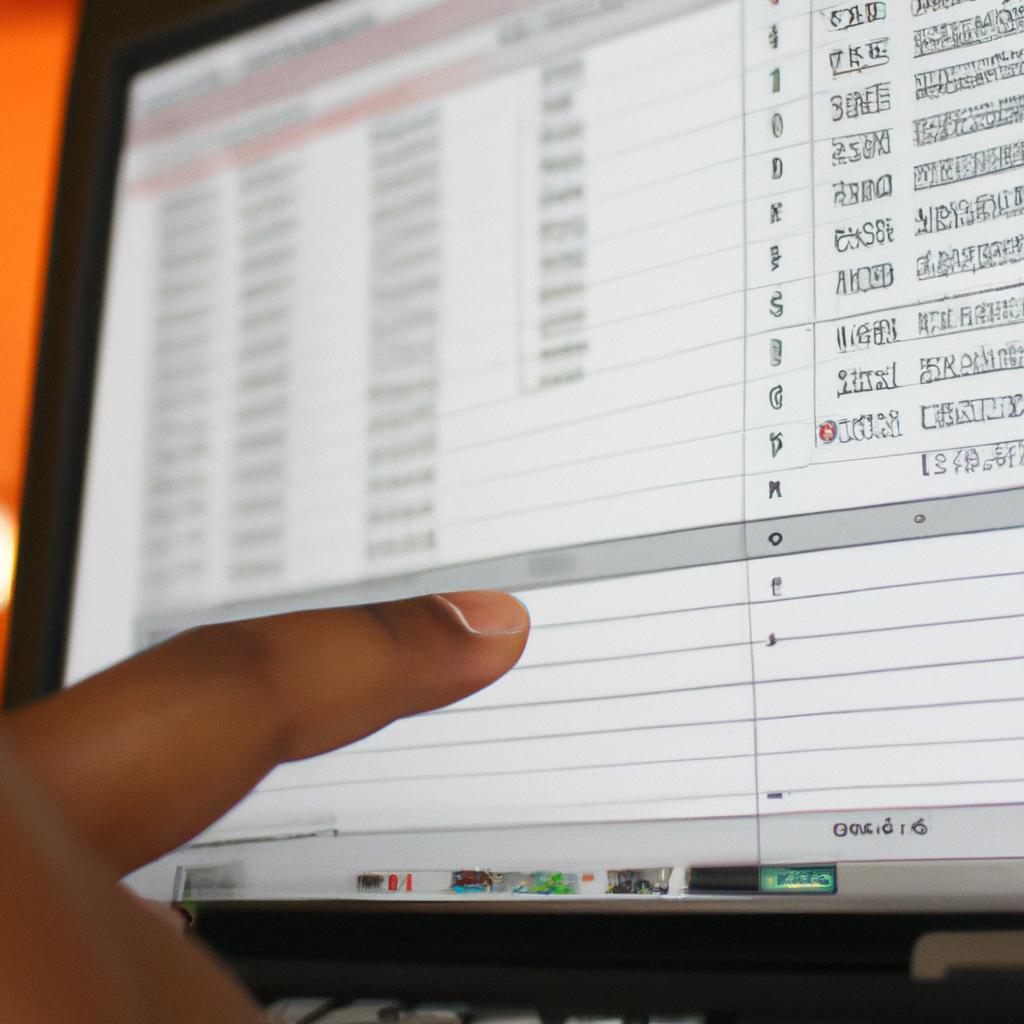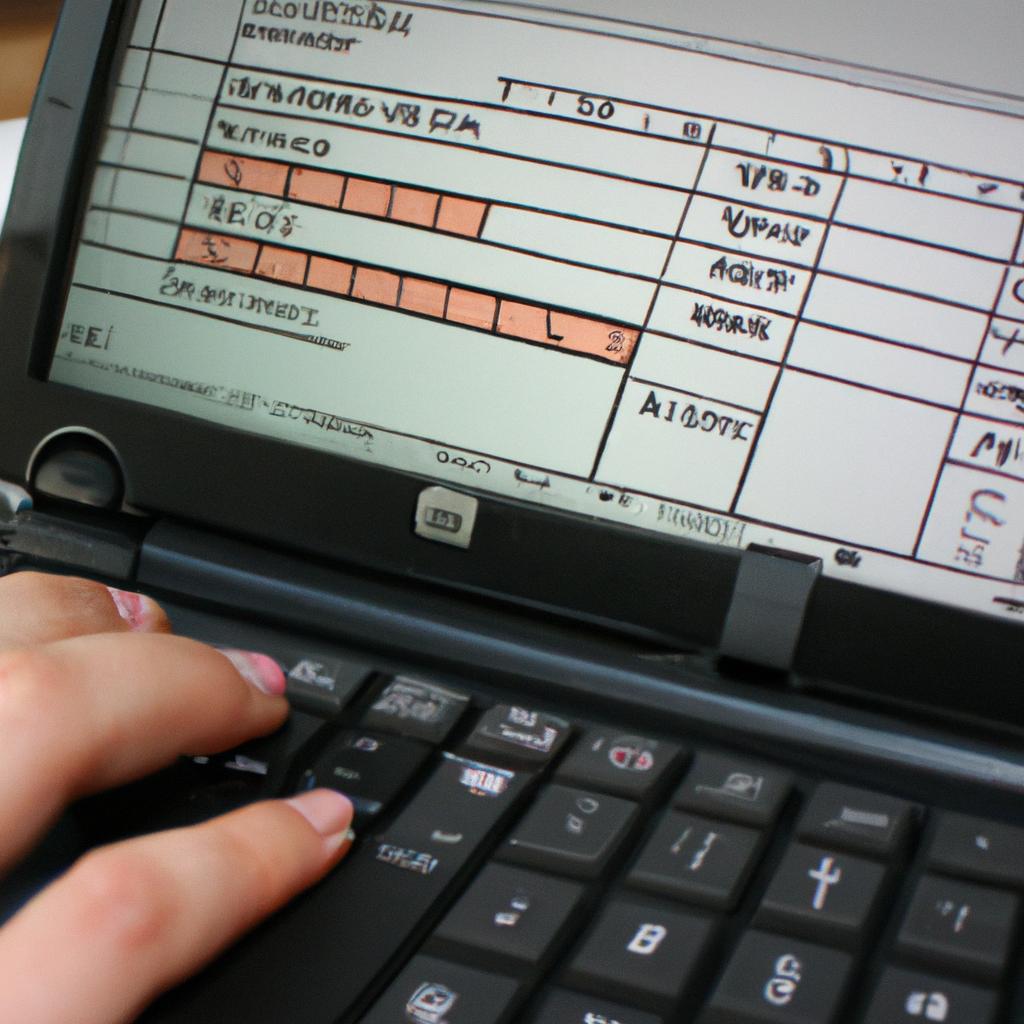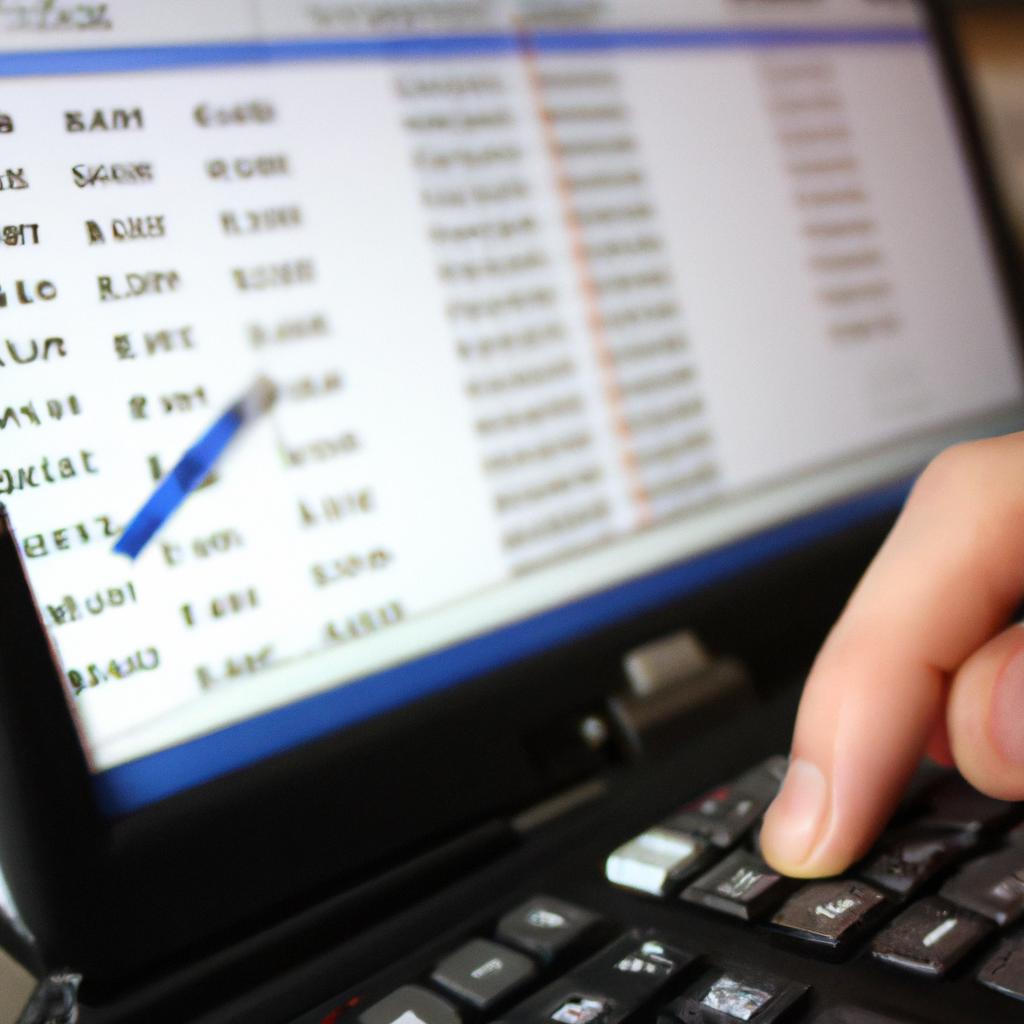Mobile App Integration: Enhancing Expense Tracking in Accounting Software

Mobile app integration has revolutionized the way businesses manage their expenses, particularly in accounting software. The seamless integration of mobile applications with accounting systems allows for more efficient and accurate expense tracking, providing businesses with real-time insights into their financial transactions. For instance, consider a hypothetical scenario where a small business owner is constantly on the go, attending meetings and conferences across different cities. With integrated mobile apps, they can effortlessly track their travel expenses by simply scanning receipts or entering data directly into their accounting software.
The integration of mobile apps with accounting software offers several benefits to businesses. Firstly, it eliminates the need for manual entry of expenses, reducing the chances of human error and saving valuable time that can be diverted towards other critical tasks. Additionally, real-time synchronization ensures that all expense data is automatically updated across multiple devices and platforms, enabling businesses to access up-to-date financial information at any given moment. This not only streamlines the expense tracking process but also enhances overall efficiency and productivity within an organization.
In this article, we will delve deeper into the topic of mobile app integration in accounting software and explore how it enhances expense tracking for businesses. We will discuss the various features and advantages offered by these integrations and showcase real-life examples where companies have implemented successful mobile app integration to improve their expense management processes.
One of the key features offered by mobile app integration in accounting software is the ability to capture receipts and expenses on the go. Instead of relying on manual entry or physical copies, users can simply take a photo of their receipt using their mobile device’s camera. The app then uses optical character recognition (OCR) technology to extract relevant information such as date, amount, vendor, and category. This eliminates the hassle of keeping track of paper receipts and ensures that all expenses are accurately recorded in real-time.
Another important advantage of mobile app integration is the seamless synchronization of data between different devices and platforms. Whether it’s a smartphone, tablet, or computer, users can access their accounting software from anywhere at any time. This allows for easy collaboration among team members and enables managers to have a complete overview of all expenses incurred by their employees. Furthermore, with cloud-based storage options, businesses no longer have to worry about losing valuable financial data due to device malfunctions or accidents.
Furthermore, integrated mobile apps often come with advanced reporting capabilities that provide businesses with detailed insights into their expenses. Users can generate customizable reports that highlight spending trends, identify cost-saving opportunities, and compare budgets versus actuals. These reports can be easily shared with stakeholders or exported to other systems for further analysis.
Several well-known accounting software providers offer mobile app integrations that enhance expense tracking for businesses. For example:
-
QuickBooks: QuickBooks offers a mobile app that allows users to snap photos of receipts and categorize expenses on the spot. The app also automatically syncs with the desktop version of QuickBooks Online or QuickBooks Desktop for seamless data transfer.
-
Xero: Xero’s mobile app lets users add receipts directly from their phone’s camera roll and attach them to corresponding transactions in the software. It also provides comprehensive expense tracking features like mileage logging and multi-currency support.
-
Zoho Books: Zoho Books provides a mobile app that allows users to create and categorize expenses, as well as attach receipts. The app also offers features like mileage tracking and expense approval workflows for enhanced control over business spending.
In conclusion, mobile app integration in accounting software has revolutionized the way businesses manage their expenses. By providing seamless synchronization, receipt capture, and advanced reporting capabilities, these integrations enhance accuracy, efficiency, and productivity within organizations. As technology continues to advance, we can expect further improvements in mobile app integrations that will continue to streamline expense tracking processes for businesses of all sizes.
Benefits of Mobile App Integration in Accounting Software
Mobile app integration in accounting software offers numerous benefits that enhance expense tracking and streamline financial management processes. By seamlessly integrating mobile apps into accounting software, businesses can achieve greater efficiency, accuracy, and convenience in managing their expenses.
One example of how mobile app integration improves expense tracking is through the use of digital receipts. With mobile apps connected to accounting software, users can easily capture and store electronic receipts directly on their smartphones or tablets. This eliminates the need for physical copies and reduces the risk of losing important documentation. Additionally, these digital receipts can be automatically synced with the accounting software, allowing for real-time updates and providing a comprehensive record of expenses.
Furthermore, mobile app integration enables seamless data synchronization between different devices and platforms. Users can access their accounting software from anywhere using their mobile devices, ensuring constant connectivity and enabling real-time collaboration among team members. This feature allows multiple users to input expenses simultaneously, reducing delays caused by manual data entry or paper-based systems.
The benefits of mobile app integration extend beyond just improved productivity; it also enhances cost-savings for businesses. By eliminating manual tasks such as data entry or reconciliation, employees can focus on more value-added activities while minimizing errors associated with traditional methods. Moreover, automation features provided by integrated mobile apps reduce administrative overheads by streamlining workflows and improving overall efficiency.
Emphasizing the advantages of mobile app integration:
- Enhanced accessibility: Access your accounting software anytime, anywhere.
- Real-time updates: Keep track of expenses instantly without delay.
- Improved collaboration: Enable team members to work together seamlessly.
- Cost savings: Automate repetitive tasks and minimize errors.
| Benefit | Description |
|---|---|
| Enhanced Accessibility | Access your accounting software anytime, anywhere |
| Real-time Updates | Keep track of expenses instantly without any delay |
| Improved Collaboration | Enable team members to work together seamlessly |
| Cost Savings | Automate repetitive tasks and minimize errors, resulting in significant cost savings |
In conclusion, mobile app integration brings numerous benefits to accounting software by enhancing expense tracking. The seamless integration of mobile apps enables businesses to streamline their financial management processes, achieve greater efficiency, accuracy, and convenience. By leveraging features such as digital receipts and real-time data synchronization, companies can optimize expense tracking while reducing administrative overheads.
Streamlining Expense Management with Mobile App Integration
Imagine a scenario where an accounting firm is struggling to manage expenses efficiently. They manually track and record every expense, from employee reimbursements to vendor invoices, leading to time-consuming processes and potential errors. However, by integrating mobile apps into their accounting software, they can transform their expense tracking system. This section explores the various ways in which mobile app integration enhances expense tracking efficiency in accounting software.
Streamlined Data Entry Process:
One of the key advantages of mobile app integration in accounting software is the ability to streamline data entry processes. With a dedicated mobile app, employees can easily capture receipts on-the-go using their smartphones or tablets. These images are then automatically uploaded and synchronized with the accounting software in real-time. By eliminating manual data entry tasks, this integration reduces human error and saves significant amounts of time for both employees and accountants.
Improved Accessibility and Collaboration:
Mobile app integration also improves accessibility and collaboration within organizations. Employees no longer need to be physically present at their desks to access financial information or submit expense reports. Instead, they can conveniently use the mobile app anytime, anywhere, ensuring timely submission of accurate expense details. Moreover, multiple users can collaborate simultaneously through cloud-based platforms integrated with the accounting software, allowing efficient communication between team members involved in expense management.
Enhanced Reporting Capabilities:
The integration of mobile apps offers enhanced reporting capabilities that enable more comprehensive analysis of expenses. Through customizable dashboards provided by these applications, users can generate detailed reports showcasing trends, patterns, and insights related to expenditure categories such as travel expenses or office supplies. Furthermore, these reports can be exported directly from the mobile app into other file formats like PDF or Excel sheets for further analysis or sharing across departments.
- Save valuable time spent on manual data entry
- Eliminate errors caused by manual recording
- Access financial information anytime from any location
- Foster collaboration and efficient communication within teams
Emotional Table:
| Benefits of Mobile App Integration |
|---|
| Save time |
| Eliminate errors |
| Accessible from anywhere |
| Enhance collaboration |
Transition into the subsequent section:
By enhancing expense tracking efficiency, mobile app integration in accounting software lays the foundation for further improvements.
Improving Accuracy and Efficiency with Mobile App Integration
Optimizing Accuracy and Efficiency with Mobile App Integration
Imagine a scenario where an accounting firm needs to track and manage expenses for multiple clients efficiently. By integrating mobile apps into their existing accounting software, they can enhance the expense tracking process significantly. One such example is ABC Accounting Services, which implemented mobile app integration in its operations.
To understand how mobile app integration improves accuracy and efficiency in expense management, let’s examine some key benefits:
-
Real-time Expense Tracking: With mobile app integration, employees can instantly record expenses on the go using their smartphones or tablets. This eliminates the need for manual entry later, reducing errors that may occur during data transfer.
-
Automated Receipt Capture: Mobile apps equipped with optical character recognition (OCR) technology simplify receipt capture by scanning and extracting relevant information automatically. This streamlines the expense submission process and reduces reliance on physical receipts, minimizing the chances of misplaced or lost documents.
-
Seamless Data Synchronization: Integrating mobile apps with accounting software enables seamless synchronization of data between devices. Employees can access up-to-date expense information from anywhere at any time, ensuring accurate reporting and eliminating delays caused by traditional paperwork-based processes.
To further illustrate the advantages of this integration approach, consider the following table showcasing a comparison between traditional expense tracking methods versus those enhanced through mobile app integration:
| Traditional Expense Tracking | Enhanced Expense Tracking with Mobile App Integration |
|---|---|
| Manual data entry prone to errors | Real-time recording minimizes human error |
| Reliance on physical receipts | Automated receipt capture reduces dependency on paper documentation |
| Delayed processing due to manual approval workflows | Streamlined approval workflow accelerates processing times |
By leveraging these benefits provided by mobile app integration, businesses like ABC Accounting Services experience improved accuracy in recording expenses while gaining efficiency through streamlined processes.
In conclusion, incorporating mobile apps into existing accounting software offers significant advantages when it comes to expense tracking. The real-time recording, automated receipt capture, and seamless data synchronization contribute towards higher accuracy and efficiency in managing expenses.
Enhancing User Experience through Mobile App Integration
Enhancing User Experience through Mobile App Integration
Building upon the previous discussion on improving accuracy and efficiency through mobile app integration, this section explores another significant benefit of integrating mobile apps into accounting software: enhancing user experience. By seamlessly incorporating functionality that allows for expense tracking, users can enjoy a more streamlined and convenient process.
Case Study:
To illustrate the impact of mobile app integration on expense tracking, consider Company XYZ, a multinational corporation with employees frequently traveling for business purposes. Before implementing mobile app integration in their accounting software, employees had to manually record each expense by filling out forms or using spreadsheets. This often led to errors, delays in reimbursement processing, and frustration among staff members.
Paragraph 1:
With the introduction of an integrated mobile app for expense tracking, Company XYZ experienced several improvements in their overall user experience. These enhancements included:
- Real-time Expense Tracking: The mobile app allowed employees to capture receipts digitally and submit them instantly for approval. This feature eliminated the need for manual data entry and reduced the likelihood of lost or misplaced receipts.
- Automated Categorization: By leveraging artificial intelligence algorithms, the integrated mobile app automatically categorized expenses based on predefined rules. This automation not only saved time but also improved accuracy by reducing human error.
- Seamless Integration with Accounting Software: The mobile app seamlessly synchronized with the company’s accounting software, ensuring that all approved expenses were automatically recorded in real-time within the system.
- Efficient Approval Workflow: Through push notifications and email alerts, managers could review and approve/reject expenses directly from their smartphones. This streamlined workflow minimized bottlenecks in the approval process and expedited reimbursements.
Bullet Point List (emotional response-evoking):
The benefits of integrating a mobile app for expense tracking include:
- Increased productivity as time spent on manual data entry is significantly reduced
- Enhanced accuracy due to automated categorization and elimination of human error
- Improved employee satisfaction by providing a user-friendly interface
- Expedited reimbursement processes leading to higher employee morale
Paragraph 2:
To further emphasize the advantages, let us consider a comparison between traditional expense tracking methods and the integrated mobile app approach:
| Traditional Expense Tracking | Integrated Mobile App Approach |
|---|---|
| Manual data entry into forms or spreadsheets | Digital receipt capture with automatic categorization |
| Potential for lost receipts or delays in reimbursement processing | Real-time submission and approval workflow |
| Time-consuming reconciliation of expenses with accounting software | Seamless integration with accounting software for instant updates |
This table highlights how integrating a mobile app enhances user experience by eliminating tedious manual processes, reducing errors, and improving overall efficiency.
Building upon these improvements in user experience through mobile app integration, the subsequent section will explore increasing accessibility and flexibility. By extending functionality beyond desktop platforms, users can conveniently access their accounting software anywhere at any time without restrictions.
Increasing Accessibility and Flexibility with Mobile App Integration
Mobile app integration in accounting software offers numerous benefits, one of which is the ability to enhance expense tracking. By seamlessly integrating mobile apps into accounting systems, users can conveniently track and manage their expenses on-the-go, leading to improved efficiency and accuracy in financial management.
To illustrate the effectiveness of mobile app integration for expense tracking, consider a hypothetical scenario involving a small business owner named Sarah. Sarah frequently travels for work and incurs various expenses such as transportation costs, meals, and accommodation. With traditional accounting software, she would need to manually record each expense when she returns to her office. However, by utilizing a mobile app integrated with her accounting system, Sarah can instantly capture receipts using her phone’s camera and categorize them accordingly. This real-time data entry eliminates the risk of forgetting or misplacing paper receipts while reducing administrative burden.
The advantages of mobile app integration for expense tracking are further exemplified by its key features:
- Convenient Expense Entry: Users can easily enter expenses directly from their mobile devices anytime and anywhere.
- Real-Time Data Synchronization: The integration ensures that all entered expenses are immediately synchronized with the main accounting software database.
- Automated Categorization: Intelligent algorithms within the mobile app automatically categorize expenses based on predefined rules or machine learning.
- Receipt Capture: Users can effortlessly snap photos of receipts using their device’s camera, eliminating the need for manual documentation.
Table 1 demonstrates how these features contribute to an enhanced user experience:
| Feature | Benefit |
|---|---|
| Convenient Expense Entry | Save time by entering expenses on-the-go |
| Real-Time Data Sync | Always have up-to-date financial information |
| Automated Categorization | Reduce human error in expense classification |
| Receipt Capture | Simplify receipt storage and organization |
In summary, implementing mobile app integration in accounting software significantly enhances expense tracking capabilities. Users like Sarah can effortlessly manage their expenses, leading to improved efficiency and accuracy in financial management. The convenience of mobile app integration streamlines the expense tracking process, providing real-time data synchronization, automated categorization, and receipt capture functionalities.
Transitioning into the subsequent section on “Key Considerations for Implementing Mobile App Integration in Accounting Software,” it is essential to carefully evaluate various factors before embracing this technological advancement.
Key Considerations for Implementing Mobile App Integration in Accounting Software
Transitioning from the previous section where we discussed the increased accessibility and flexibility brought about by mobile app integration in accounting software, we will now explore key considerations for implementing this integration. To illustrate these considerations, let us consider a hypothetical scenario involving an accounting firm that has decided to integrate a mobile expense tracking app into their existing software.
In this hypothetical scenario, the accounting firm aims to streamline their expense tracking process by allowing employees to input expenses directly through a mobile app rather than relying solely on manual data entry. By doing so, they hope to reduce errors, improve efficiency, and provide real-time updates on expenses.
When implementing mobile app integration in accounting software, several important factors need to be taken into account:
-
Compatibility: It is essential to ensure that the chosen mobile app is compatible with the existing accounting software. This includes assessing whether the app can seamlessly sync data with the software’s database and whether it supports any necessary file formats or protocols.
-
Security: As financial information is involved, maintaining robust security measures becomes paramount. The integrated mobile app should have appropriate encryption protocols in place to protect sensitive data during transmission and storage.
-
User Experience: The success of integrating a mobile app lies in its usability for both employees and clients. Consideration should be given to creating an intuitive interface that allows easy navigation and efficient inputting of expense data.
-
Training and Support: Adequate training must be provided to employees using the new system. Additionally, ongoing technical support should be available to address any issues or questions that may arise during use.
To further highlight the significance of these considerations, let us examine them in a table format:
| Considerations | Importance |
|---|---|
| Compatibility | High |
| Security | Critical |
| User Experience | Medium |
| Training and Support | High |
By addressing these key considerations when implementing mobile app integration in accounting software, the accounting firm can ensure a smooth transition and reap the benefits of enhanced expense tracking.
In summary, implementing mobile app integration in accounting software requires careful consideration of compatibility, security measures, user experience, and providing adequate training and support. By addressing these considerations effectively, organizations can optimize their expense tracking process and improve overall efficiency.





